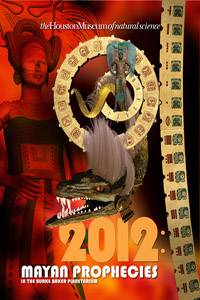
2012: Mayan Prophecies
Explore The Prophecies Of The Mayan Astronomers! Visit the Classic Mayan cities of Uxmal, Chichen Itza, Tikal, and Palenque to discover how the Maya aligned their temples to watch their sky gods and used interlocking calendars to record the past and predict the future. Explore pyramids towering above the rainforest, designed as observatories to follow the sun. Experience the apocalypse of the Maya and discover how our fate in 2012 may be foretold in Mayan Prophecies.
WARNING: This show contains a sacrificial ritual scene. Viewer discretion is advised.
Run time: 35 minutes
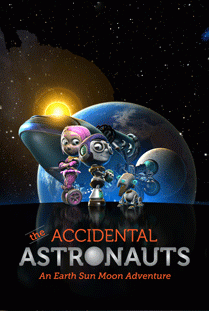
Accidental Astronauts
Follow the adventures of Cy and Annie and their dog Armstrong as they embark on an unexpected journey into space!
Explore the Earth, Sun and Moon system with a wise-cracking spaceship computer. See an asteroid crash into the Moon. Bounce along with them on the lunar surface. Get up close and personal with a solar storm. And gain a new appreciation of our home planet.
Run time: 35 minutes
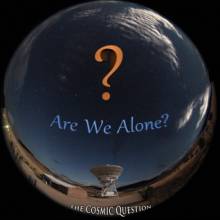
Are We Alone?
Have you ever looked up into the nighttime sky and wondered if there was anyone our there among the stars? Are We Alone explores the tools and methods used by Astronomers, both professional and amateur as they try to unlock the cosmic question.
Grade Level: 4th and higher
Run time: 25 minutes
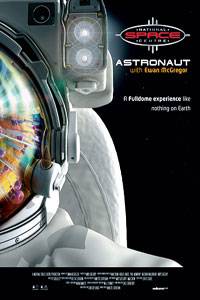
Astronaut
The exploration of space is the greatest endeavor that humankind has ever undertaken. What does it take to be part of this incredible journey? What does it take to become an astronaut?
"Astronaut," the latest immersive planetarium show to be created by the National Space Centre, takes you from Earth into space... and beyond. Experience a rocket launch from inside the body of an astronaut. Explore the amazing worlds of inner and outer space, from floating around the International Space Station to maneuvering through microscopic regions of the human body. Discover the perils that lurk in space as we subject 'Chad', our test astronaut, to everything that space has to throw at him.
Presented in stunning high definition 360-degree full-dome video and explosive surround sound, Astronaut is an experience like nothing on Earth.
"Astronaut" is preceded by an Apollo 11 tribute show. "Astronaut" is supported by: NASA NY Space Grant, Department of Physics & Astronomy, C.O.V.E., the Upstate Institute, and the Department of Biology.
Grade Level: 4th and higher
Run time: 30 minutes
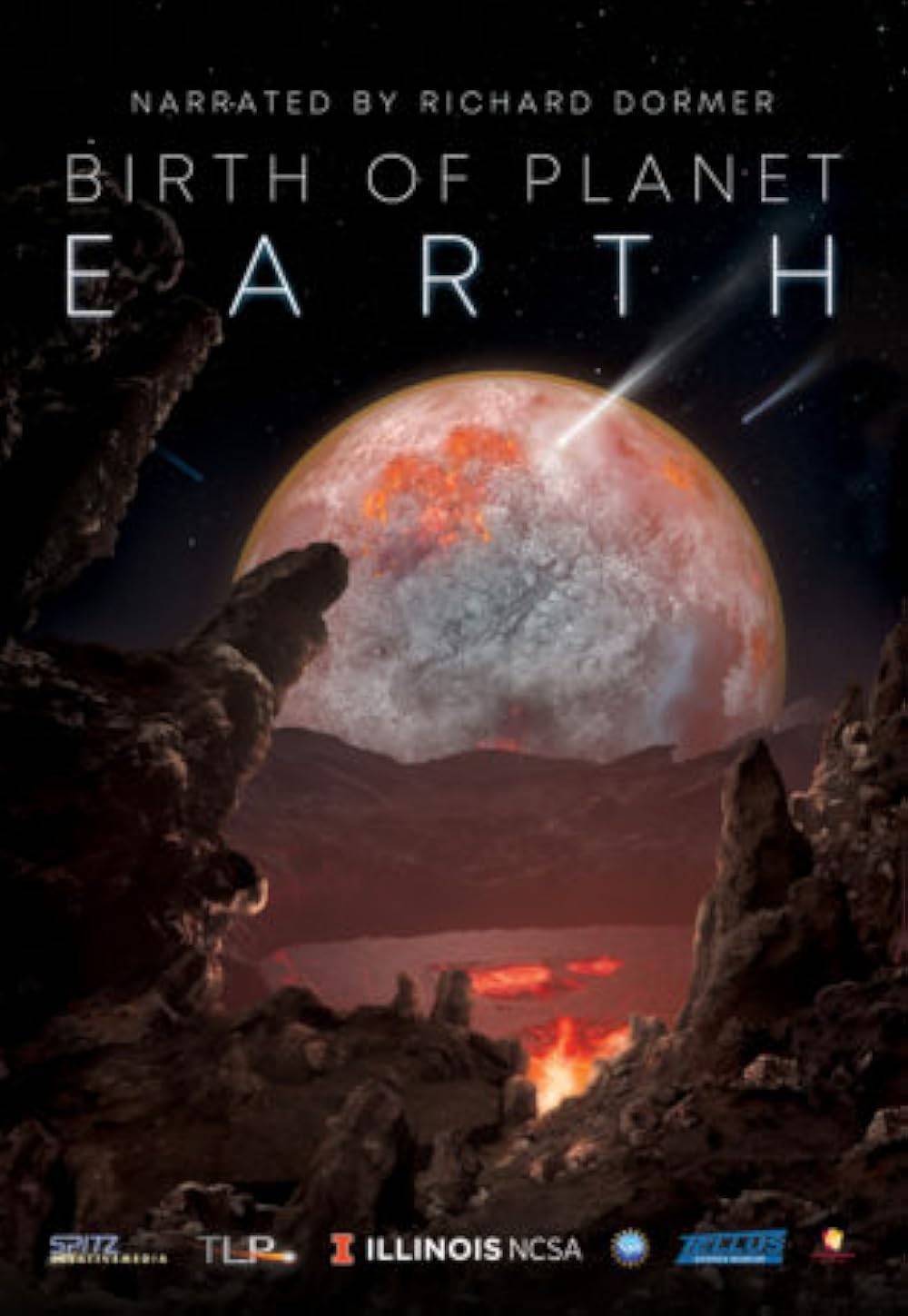
Birth of Planet Earth
Narrated by Richard Dormer.
Birth of Planet Earth tells the twisted tale of our planet’s origins.
Scientists now believe that our galaxy is filled with solar systems, including up to a billion planets roughly the size of our own. The film employs advanced, data-driven, cinematic-quality visualizations to explore some of the greatest questions in science today: How did Earth become a living planet in the wake of our solar system’s violent birth? What does its history tell us about our chances of finding other worlds that are truly Earth-like?
Produced by Spitz Creative Media, NCSA’s Advanced Visualization Lab, Thomas Lucas Productions, Inc., in association with Tellus Science Museum. This project has been made possible with support from the Commonwealth of Pennsylvania and the Greater Philadelphia Film Office; funded in part by the National Science Foundation.
Grade Level: 5th and higher
Run time: 30 minutes
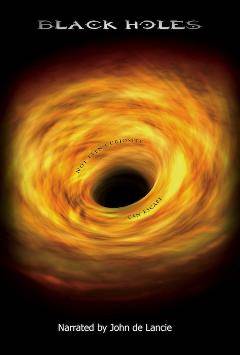
Black Holes
Black Holes takes you on a journey through one of the most mystifying, awe-inspiring phenomena in the universe: a black hole. Where do they come from? Where do they go? How do we find them? Is there one on Earth’s horizon? Using the latest in full-dome, 3D animation visualization technology. We invite you to explore with us the science and mystery of “Black Holes.”
Run time: 37 minutes
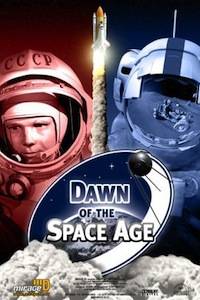
Dawn of the Space Age
Relive the excitement of the early days of space exploration, from the launch of the first artificial satellite Sputnik, to the magnificent lunar landings and privately operated space flights. Be immersed and overwhelmed with this most accurate historic reconstruction of man’s first steps into space. Who were the men and women who took part in these death-defying days? Witness their drive, their passion, and their perseverance to explore in "Dawn of the Space Age."
Run time: 35 minutes
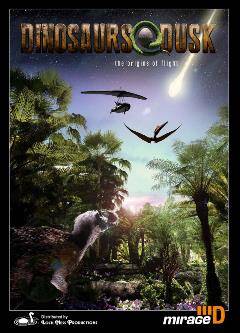
Dinosaurs at Dusk
A learning adventure of a father and his teenage daughter Lucy, who share a fascination for all things that fly.
You’ll travel back in time to meet the pterosaurs and the ancestors of modern-day birds: the feathered dinosaurs. Lucy and her father navigate from continent to continent, looking for clues about the origins of flight.
When time runs out they experience first-hand the cataclysmic “last day” of the dinosaurs.
Science content includes topics such as continental drift, proper motion of stars, asteroids and impacts, extinctions and the convergent development of flight among species.
Run time: 30 minutes
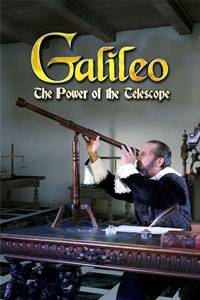
Galileo: The Power of the Telescope
Two eyes and two pieces of glass revolutionized human understanding 400 years ago. The eyes belonged to Galileo Galilei, and the curved pieces of glass were the lenses of his telescope. In "Galileo: The Power of the Telescope," you'll learn Galileo's personal and powerful story, and explore how his discoveries displaced long-held views about the universe. Narrated by Dava Sobel, author of the award-winning biography Galileo's Daughter.
Sponsored by: NASA - NY Space Grant, Core- Scientific Perspectives & Department of Physics and Astronomy @ Colgate
Run time: 30 minutes
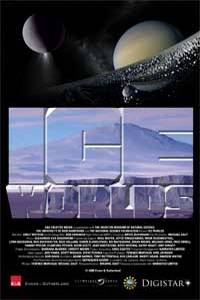
Ice Worlds
The delicate balance between ice, water and the existence of life has been a topic of exploration and discovery in science for generations. In travels to the Arctic and Antarctic regions of our planet, we'll examine the ecosystems that live and thrive there and see how their survival is connected with our own. Beyond Earth, we'll see how the existence of ice shapes the landscape and the natural systems on other planets and moons in our solar system. Narrated by Emily Watson, star of The Water Horse: Legend of the Deep. Produced in cooperation with the University of New Hampshire, the Houston Museum of Natural Science, with the support of the National Science Foundation.
Run time: 23 minutes
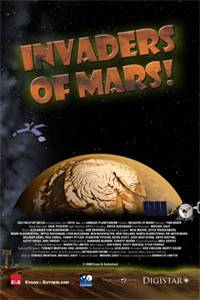
Invaders of Mars
Under the care of Emmy award-winning space artist, Don Davis, this beautifully crafted show highlights our ongoing exploration of Mars. We explore the Martian surface as seen by Earth's various spacecraft "invaders" and use the data gathered to explore the red planet as only CGI can. We fly over the great chasms, canyons and volcanoes, descend amid the ice of a Martian polar cap and are buffeted by swirling dust devils. Blinded by the planet-wide storms which engulf this world from time to time, we emerge to discover a whole new world which is the red planet Mars. The invaders have landed. Narrated by Tom Baker of the BBC's Dr. Who.
Run time: 24 minutes
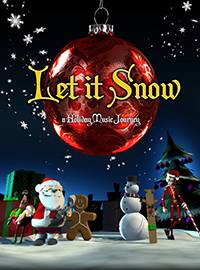
Let It Snow
"Let it Snow" features a new variety of festive classics from Frank Sinatra and Chuck Berry to Burl Ives and Brenda Lee, and includes a stunning multi-media finale by the Trans Siberian Orchestra. The soundtrack is visually enhanced with thematic animation, special effects and all-dome scenery in the audiovisual setting of the Ho Tung Visualization Lab.
Run time: 30 minutes
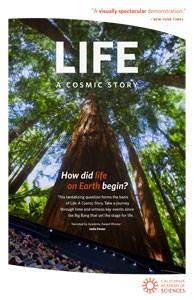
Life: A Cosmic Story
"Life: A Cosmic Story" begins in a redwood forest, with the sounds of wind and life. One redwood looms large, until we approach its branches and enter one of its leaves, adjusting our perspective to microscopic scales inside a cell.
We see a pared-down version of its inner workings, learning about the process of photosynthesis and the role of DNA. This scene sets the stage for the story of life. We then leap backward billions of years to the origin of elements themselves. The early Universe contained mostly dark matter, which drew hydrogen and helium together to form the first stars. The carbon and heavier elements required by living organisms came from generations of stars. We continue our journey, diving into the Milky Way Galaxy of several billion years ago. We approach a region in which stars are forming, where we encounter a protoplanetary disk surrounding our newborn Sun. We arrive at the young Earth, splashing down in deep water to visit a hydrothermal vent and to examine the formation of organic molecules. We then travel above a volcanic island to encounter an enriched "hot puddle" of water, in which nucleotides (building blocks of RNA and DNA) may have wrapped themselves in protective vesicles. Once life took hold, it radically changed our planet. Earth's early microorganisms created our oxygen atmosphere and may have also triggered a global ice age, causing temperatures to drop precipitously and nearly freezing out life on our planet.
We continue leaping forward in time, viewing the movement of continents and the changing environment for life, until we reach modern Earth. All life shares a common ancestry and common chemistry, all related at the molecular level. As we learn this, we pull away from individual images of life, and we end the show as we see their three-dimensional distribution form the double-helix strand of DNA. The audience is left immersed inside a representation of the structure of life's shared origins.
Run time: 25 minutes
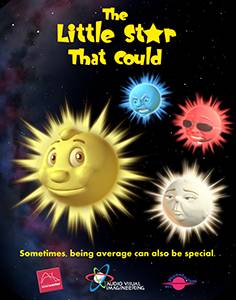
The Little Star that Could
The Little Star That Could” is a story about Little Star, an average yellow star in search for planets of his own to protect and warm. Along the way, he meets other stars, learns what makes each star special, and discovers that stars combine to form star clusters and galaxies. Eventually, Little Star finds his planets.
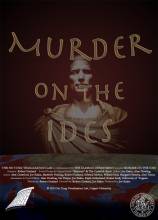
Murder on the Ides
The Ho Tung Visualization Lab in coordination with the Classics department presents Murder on the Ides. March, 44 BCE was the most infamous day in Roman history. It's the day when the most celebrated Roman of all time, Gaius Julius Caesar, was brutally murdered by assassins. Combined with green screen technology and fulldome animations Colgate students, staff, and faculty produced this full dome show to uncover the mysteries surrounding this fateful day. Narrated by Classics professor, Robert Garland.
Sponsored by: Classics Department, Ho Tung Visualization Lab, Division of Natural Sciences & Mathematics, and Information and Technology Services
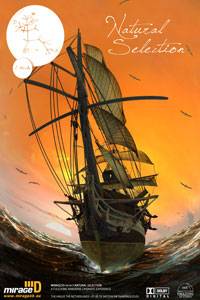
Natural Selection
Join the young Charles Darwin on an adventurous voyage of exploration circumnavigating the world with the HMS Beagle. In Victorian times, many physical phenomena were already discovered and described by natural laws, but life's most eloquent mechanism was still unknown: How could new species arise to replace those lost in extinction? It was time for someone to stand up and come forth with a naturalist explanation of this mystery of mysteries. Witness the thrill of scientific discovery by seeing the world through Darwin's eyes, make observations of the most beautiful natural scenery and let the pieces of the scientific puzzle slowly but surely fall into place. Allow Darwin himself to reveal this simple and most beautiful mechanism that explains the Evolution of all Life on Earth: Natural Selection, the single most wonderful idea anyone has ever had.
Sponsored by: Dean of the Faculty, Department of Geology, Department of Biology, Core: Scientific Perspectives, Department of Physics & Astronomy, and Information Technology Services.
Run time: 35 minutes
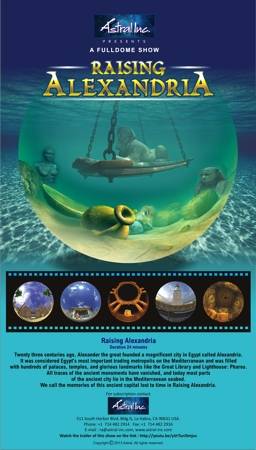
Raising Alexandria
Twenty-three centuries ago, Alexander the Great founded a magnificent city in Egypt called Alexandria. It was considered Egypt's most important trading metropolis on the Mediterranean and was filled with hundreds of palaces, temples, and glorious landmarks like the Great Library and the lighthouse: Pharaohs. All traces of the ancient monuments have vanished, and today most parts of the ancient city lie in the Mediterranean seabed. We recall the memories of this ancient capital lost to time in Raising Alexandria.
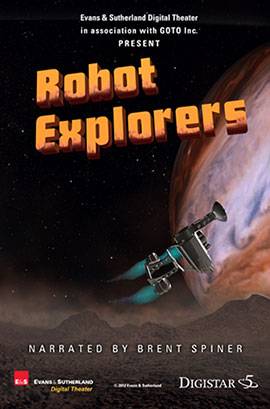
Robot Explorers
Near the end of the twentieth century, we began launching unmanned probes into the far reaches of the solar system. What they discovered was amazing and in some cases unexpected. Now after dozens of probes have been deployed, the exploration continues. New space missions are underway, and many of these robust spacecraft are still operational, beaming their knowledge back to Earth every day. We will pay tribute to these robots who have explored in our place and experience what they have taught us about our solar system
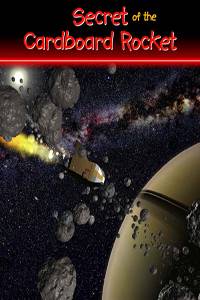
Secret of the Cardboard Rocket
The program features the daring exploits of a young girl and boy who make a cardboard box and decide to turn it into a rocket to visit the sun, moon and planets. The characters take along everything they need, including balloons full of air and an astronomy book that talks.
Sponsored by: NASA NY Space Grant, Department of Geology, Howard Hughes Medical Institute, C.O.V.E., Upstate Institute, Division of Natural Sciences & Math, Department of Physics & Astronomy
Run time: 30 minutes
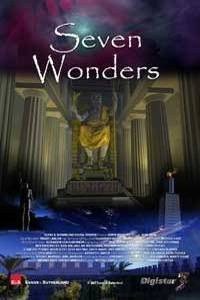
Seven Wonders
Turn back the pages of time and witness the ancient wonders of the world as they appeared thousands of years ago. Travel to Egypt to visit the Lighthouse of Alexandria and the Great Pyramids, to Persia to see the original Mausoleum, to Babylon to explore the fabled Hanging Gardens, to Greece to tour the Temples of Zeus and Artemis, and to Rhodes to stand in the shadow of the towering Colossus. We will investigate the theories of how these wonders were created, and get a glimpse of some of the universe's greatest wonders.
Run time: 31 minutes
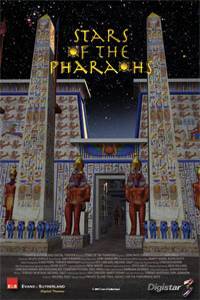
Stars of the Pharaohs
Travel to ancient Egypt to see how science was used to tell time, make a workable calendar, and align huge buildings. You'll learn about the connection the ancient Egyptians felt with the stars and various astronomical phenomena. And thanks to the time Digital Theater's production team spent on location in Egypt taking photographs and measurements, you'll see some of the most spectacular temples and tombs of the ancient world recreated in their original splendor.
Run time: 35 minutes
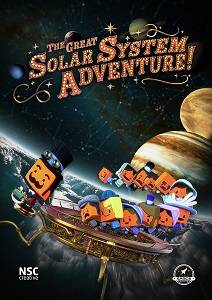
The Great Solar System Adventure
Join showman extraordinaire "The Great Schiaparelli" as he takes the audience on a death-defying space-time adventure within his wondrous Observatorium. From the sun-scorched surface of Mercury to the icy expanses of Pluto and beyond, prepare to be subjected to the myriad dangers and wonders of our Solar System, on a breathtaking tour that reveals just how precious our home planet really is. Be warned though, the Observatorium isn’t just for show. It will transport the audience right to the heart of some of the deadliest locations in our slice of the heavens. It’s going to take some fancy flying to get everyone back in one piece!
Run time: 24 minutes
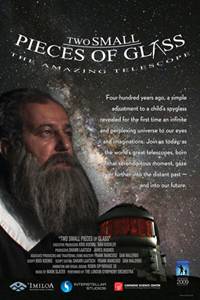
Two Small Pieces of Glass
The show follows two students as they interact with a female astronomer at a local star party. Along the way the students learn how telescopes work, the history of telescopes, and major discoveries made by these instruments.
Run time: 24 minutes
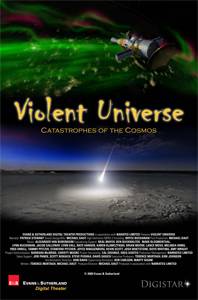
Violent Universe
The beauty of a starlit sky conceals the violent forces at work within our universe. From the upheaval of a giant star that explodes to release its material into space, to a future encounter between the Earth and a large asteroid that is too close for comfort, we will witness the forces that hold the universe together and occasionally try to rip it apart. Narrated by Patrick Stewart of "Star Trek: The Next Generation" and the X-Men films.
Run time: 31 minutes
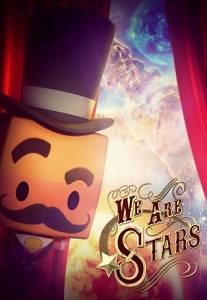
We Are Stars
What are we made of and where did everything come from?
Journey 13.8 billion years through time and space to discover our explosive origins. Investigate our cosmic chemistry by following the formation of Hydrogen atoms to the synthesis of Carbon and beyond. See stars explode and planets form as you explore the secrets of the universe alongside the Time Master, a cheeky Victorian guide leading this steampunk inspired adventure. This astronomy feature is followed by a live presentation that allows you to explore the stars like never before.
Run time: 26 minutes